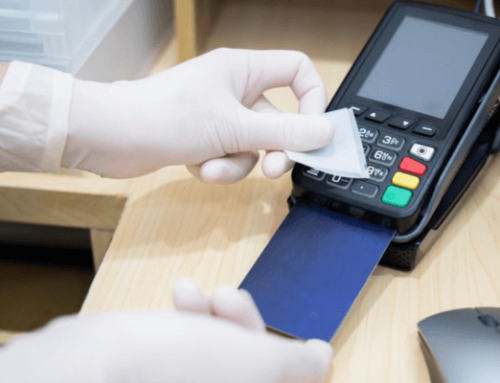
The financial health of your business depends on many factors, particularly controlling the inflow and outflow of money.
Cash flow is therefore a vitally important tool for understanding not only how much money is flowing in and out of the company, but also the solvency and liquidity of your business, which is why it is essential to manage your financial cash flow well.
To help you with this task, we've created a Guide in which we explain what cash flow is in depth, how to analyse it, calculate it and use it to boost your business's profits.
What is Cash Flow?
As we've mentioned, the company's cash flow is an important tool for analysing the financial health of your business, as it calculates the business's ability to attract customers and make the payments it is obliged to make.
From here, you can find out if the business is viable and act accordingly to change the management strategies you have adopted and achieve a positive cash flow. And what does the concept of positive cash flow mean?
A positive cash flow occurs when the assets (profits from sales, interest income from investments, etc.) are such that they can cover the obligations (payment of salaries, payment to suppliers, etc.) and also reinvest in the development of the business or, if necessary, turn this balance positive to encourage the creation of working capital.
Types of Cash Flow
Cash flow can be divided into three types, which are differentiated according to the area of the business in question:
-
Operating Cash Flow
This type of cash flow takes into account the money generated through the sale of products and services, the payment of salaries, the payment of suppliers, taxes and expenses arising from the operation.
Here, a positive cash flow means that the business is generating a profit, i.e. that the money from sales exceeds the money spent on operating expenses.
-
Investment Cash Flow
Here, this type of cash flow refers to the money invested in the growth of the business. If your company is in a growth phase, it's natural for this cash flow to be negative.
-
Financing Cash Flow
This type of cash flow is more typical of listed companies that, for example, receive money from investors and pay dividends to shareholders.
How to calculate and analyse cash flow?
In order to calculate your business's cash flow, you need to start by identifying the components of your type of cash flow. As far as our article is concerned, we're going to focus on operational cash flow, since that's what most Portuguese businesses struggle with.
In this case, the calculation will take into account cash inflows (sales revenue) and cash outflows (salaries, supplier expenses, rent, etc.).
Once the components have been identified, the cash flow must be calculated using the following formula:
Operating Cash Flow = Operating Income - Operating Expenses
The maths is simple, but what's most interesting about this operation is the subsequent analysis you make of the data.
In the case of an operating cash flow, a positive cash flow will indicate that your business is generating revenues that are sufficient to cover operating expenses, while a negative cash flow indicates that expenses are higher than revenues and you will have to modify one or several points of your business strategy.
When the accounts are unbalanced to the negative side, it is important to carry out a vertical analysis of the cash flow, i.e. to compare individual components in relation to their weight in total revenue so that you can see which part(s) of the business are contributing to the negative cash flow.
In addition to vertical analysis, you can also carry out a horizontal analysis which compares the evolution of cash flow over time. This type of analysis will allow you to identify trends over time and understand whether or not the management changes you have made have had a positive effect on your accounts.
How to do cash flow step by step?
To make a cash flow of your business, you must:
Step 1: Record all cash inflows and outflows and analyse them
In order to analyse your accounts as clearly and transparently as possible, it's important to start by recording all cash movements (inflows and outflows).
If you do this regularly, the analysis, which you also want to do regularly, will be a win-win situation, as it will give you a more accurate picture of the financial state of your business, allowing you to implement more assertive business strategies.
Step 2: Plan your cash flow
Although no one can control external factors such as a lack of raw materials in a given period of time, cash flow planning is an excellent guide to organising your accounts over time.
Based on the data you've obtained, project the costs of salaries, suppliers and taxes and how much money you expect to make from sales in the medium term.
Step 3: Attention to Stock
In order to achieve a positive cash flow, use the projections to define stock requirements and guard against price rises that could spiral out of control.
Step 4: Adopt new business strategies
To turn a negative cash flow into a positive one or to boost profits, it's important to think about and adopt new strategies for your business based on regular analyses not only of cash flow, but also of market trends and the consumption of your target audience.
For example, there is currently an exponential increase in transactions using payment methods contactless (71% of the transactions in REDUNIQ's transactional system are made using this technology) and the weight of this technology in the invoicing of Portuguese businesses (according to REDUNIQ Insights, 56% of invoicing comes from contactless payments).
By identifying this trend, it can be extremely important to invest in a payment terminal (TPA) with contactless technology that suits your type of business:
- Seasonal or low turnover business: if your business is in this field (roulottes, food trucks, etc.), REDUNIQ offers you the REDUNIQ Easy, a Free TPAThis is a monthly fee tailored to your business, with no membership costs, loyalty period or minimum revenue, which allows you to accept credit and debit card payments (Visa and Mastercard brands) via PIN, Contactless e MB WAY.
- A business that favours mobility and has a high turnover: If you have a small catering or hotel business and you favour mobility, REDUNIQ is the right place for you. TPA Android – REDUNIQ SmartA terminal that, in addition to allowing any business to accept contactless payments with card, chip, MB WAYGoogle Pay and Apple Pay come with a set of built-in management apps that will help you manage your cash flow and allow your business to be completely mobile and digital.
Among these apps, you can sign up for the Instalments now with UNICRE, which allows its customers to pay for their purchases in between two and six monthly instalments interest-free and free of charge for you and the app Tax Free which will save you time, resources and ensure greater convenience throughout the entire purchase and VAT refund experience.
- Forward-thinking businesses: if the obligations of running your business force you to spend long periods away from the company and you would still like to continue receiving payments, the innovative REDUNIQ Soft is the right solution, as it will allow you to accept payments quickly and easily via an app installed on your smartphone. In practice, this Android NFC payments will turn your smartphone or tablet into a real TPA and your business will immediately be ready to start receiving NFC payments, QR Code e Contactless.
In addition, you can send receipts by email, make remote returns, personalise the profiles of your customers and suppliers and manage the entire business through a Management Backoffice.


